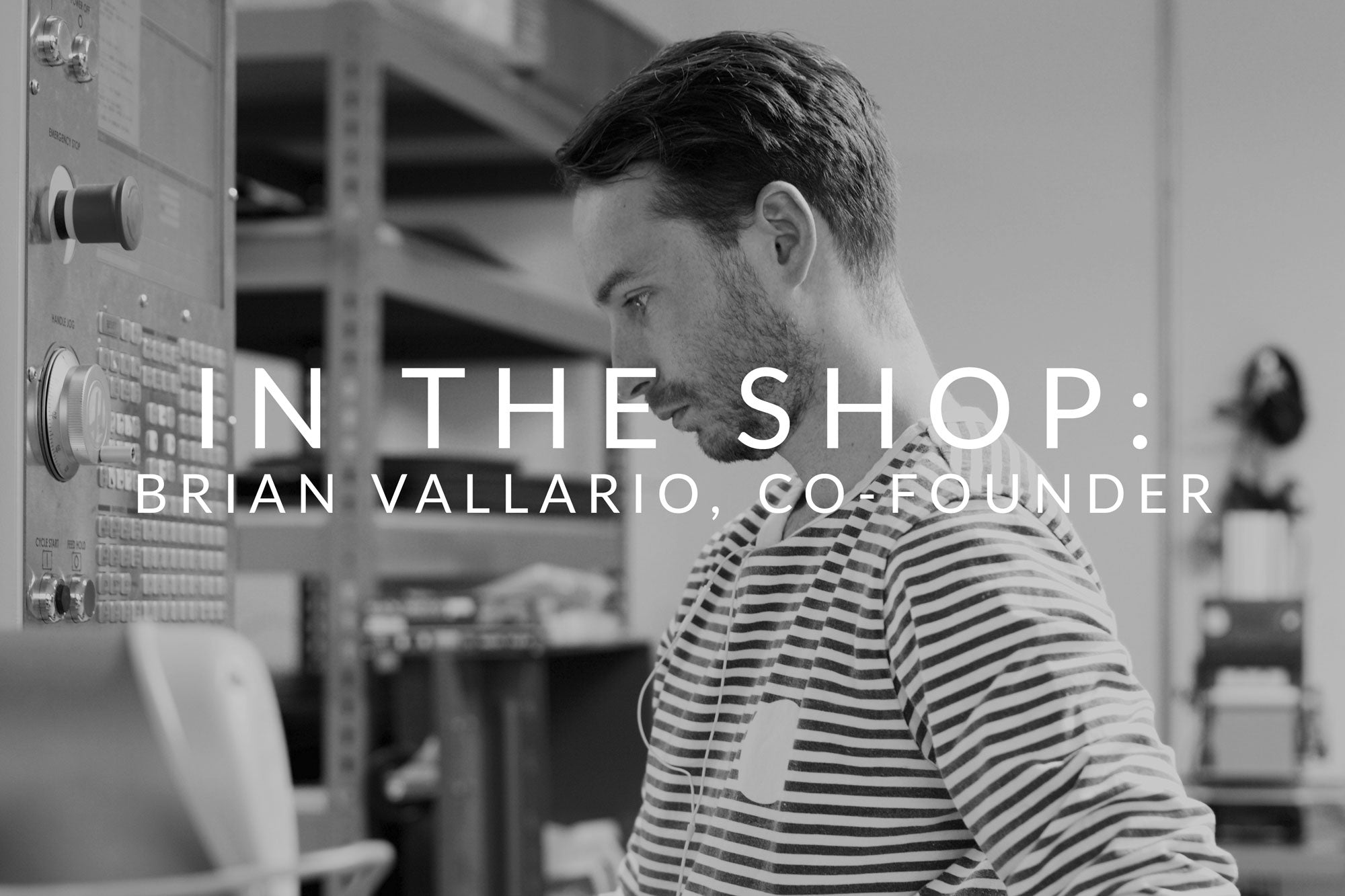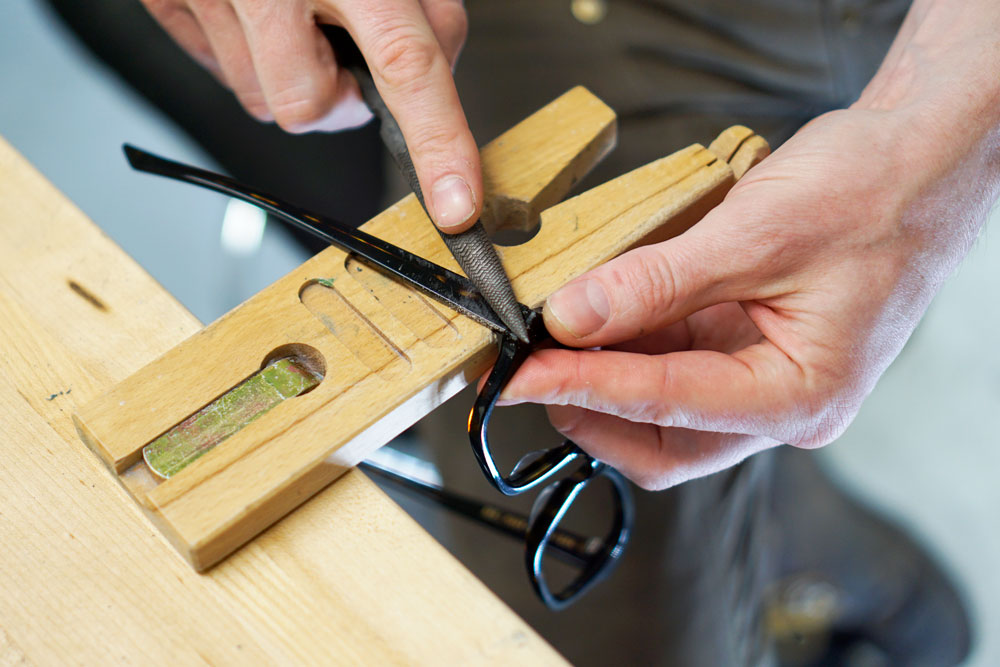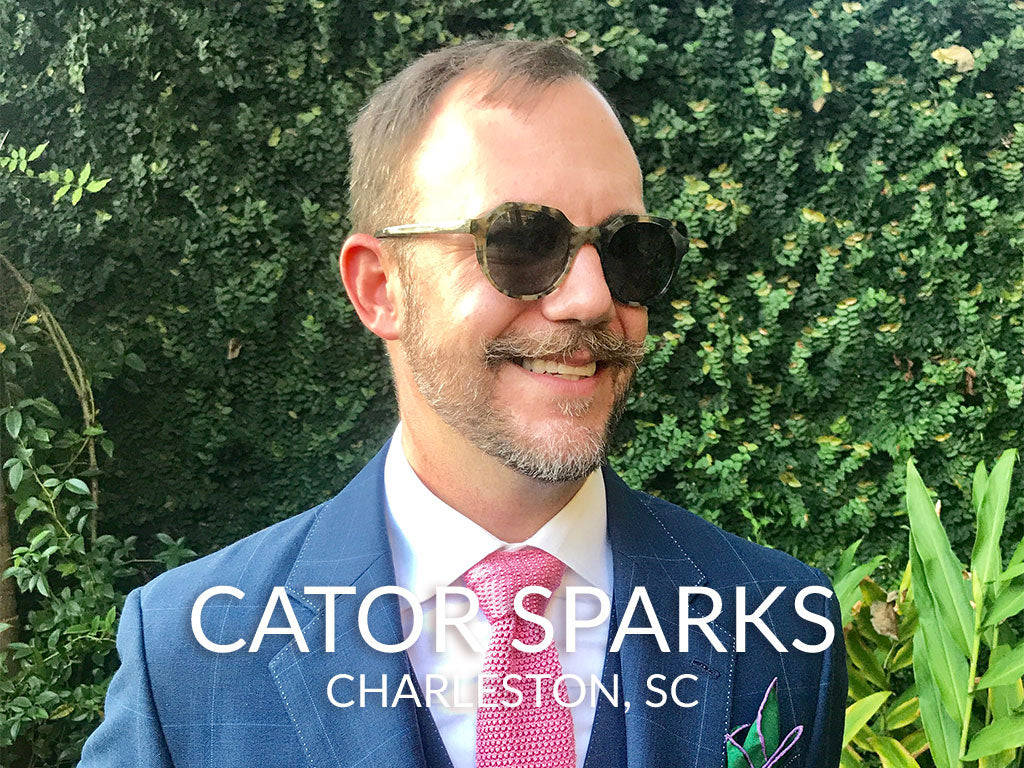
IN THE SHOP : BRIAN VALLARIO
What made you want to launch Lowercase
When I first met with Gerard, I wasn't really looking to leave architecture. I had recently taken a new job working for a developer though, and I felt like I had sold my soul a bit. I was just staring at a computer all day and working on really superficial projects- It was a side of architecture I had promised myself I would stay out of and somehow was in the thick of it. I felt like I had lost my way a bit.
I've always been interested in the craft and fabrication side of design. I used to work in factories and fabrication shops growing up, so when Gerard told me his plan to start manufacturing eye wear in New York I was sold from the start. The opportunity to bring a craft back home and produce our own designs - I knew it was something I wanted to be a part of.

Where did you grow up, and what kind of kid were you?
I split my childhood between the Jersey Shore and Vermont, eventually moving up to Vermont full time when I was 13. I was at a boarding school, but my parents ended up moving up there a few years later. I was deathly shy as a kid and barely spoke, but I was super active and always outside. I spent all my time either on the mountain or in the woods. I feel most at home in the mountains. The city still feels a bit foreign to me, but I kind of love that. I'm not as shy these days, but I am still quiet.
I was also really into skateboarding and snowboarding, which definitely has had a huge influence on me. There's a community built around that world that is extremely strong and filled with really interesting and good people - it definitely helped shape me.
Why did you decide to study architecture?
I think it was a culmination of a few things but looking back, there's a few turning points that put me on that path. I was working at a snowboard factory in Vermont during high school, and we had a CNC machine. I thought it was really cool, and the guy that came in to program it was an architect. I just assumed that I could learn how to do that stuff if I studied architecture, which was completely misguided, but we ended up having one at Pratt when I went to grad school and I was able to take a few classes that used them.
Also, I remember reading this interview with a graphic designer I really admired when I was younger. He had studied architecture and was talking about how well rounded of an education it was, and that he felt like it gave him an approach to design that was extremely scalable. I really connected with this and this was probably the main reason I stuck with architecture because I still wasn't really sure what kind of design I wanted to do.
What skills from prior jobs were you able to apply into eyewear manufacturing, and what new ones did you have to learn?
There were definitely a few technical skills that directly translated, especially on the design side of things - 3D modeling, programming, some basic fabrication and graphic design skills. Really, though, the most important thing is an approach to problem solving. It's a lot of experimentation and self-criticism. Self-criticism is really hard thing to do but I'm working on it...
The list of thing's I've learned along the way is far too long to go through, but I think the one I'm most proud of is I can now consider myself an amateur mechanic. It's amazing how much time I spend researching, modifying and fixing machinery. I defnitely didn't appreciate that side of manufacturing before we started this. Luckily I have Ryan to help me with those things now - he's way better with that stuff than I am.

Your sources of inspiration (life or design)
My friends - most of them are creatives and I get really excited when I see the things they're producing. We've been lucky enough to be able to collaborate with a few of them along the way, which has been awesome.
I try not to look at the eyewear or fashion industry too much. I tend to be more interested in designers, artists and craftsman outside of this industry. I think there's a lot more to learn from studying people who have the same values but maybe take a different approach or go through a different process of designing and making.
Biggest lesson learned so far and the current challenge?
Biggest lesson so far has been that redundancy in whatever you build is really important. Whether it’s in production, design, sales - it goes for everything. Things break and it's not a matter of if, but when. When you get caught off guard it's going to be a headache. We came into this being complete outsiders from the industry which definitely has it's pro's and it's cons. I think we've done a really good job of learning on the fly, but it's definitely been trial by fire. You have to be flexible and just be willing to sit down and figure it out.
Interview + Photos : Aiko Austin



